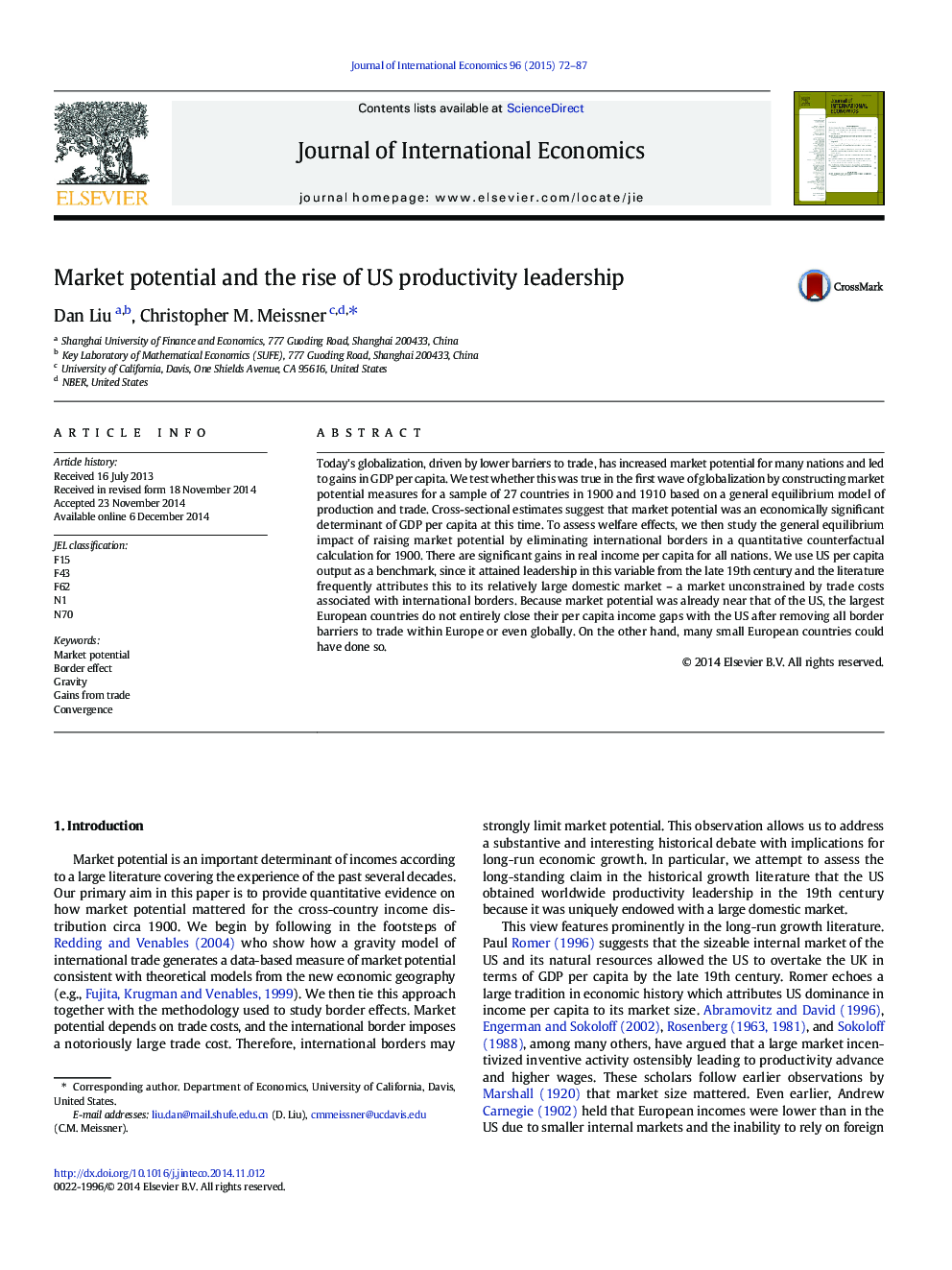| Article ID | Journal | Published Year | Pages | File Type |
|---|---|---|---|---|
| 962935 | Journal of International Economics | 2015 | 16 Pages |
Abstract
Today's globalization, driven by lower barriers to trade, has increased market potential for many nations and led to gains in GDP per capita. We test whether this was true in the first wave of globalization by constructing market potential measures for a sample of 27 countries in 1900 and 1910 based on a general equilibrium model of production and trade. Cross-sectional estimates suggest that market potential was an economically significant determinant of GDP per capita at this time. To assess welfare effects, we then study the general equilibrium impact of raising market potential by eliminating international borders in a quantitative counterfactual calculation for 1900. There are significant gains in real income per capita for all nations. We use US per capita output as a benchmark, since it attained leadership in this variable from the late 19th century and the literature frequently attributes this to its relatively large domestic market - a market unconstrained by trade costs associated with international borders. Because market potential was already near that of the US, the largest European countries do not entirely close their per capita income gaps with the US after removing all border barriers to trade within Europe or even globally. On the other hand, many small European countries could have done so.
Related Topics
Social Sciences and Humanities
Economics, Econometrics and Finance
Economics and Econometrics
Authors
Dan Liu, Christopher M. Meissner,
